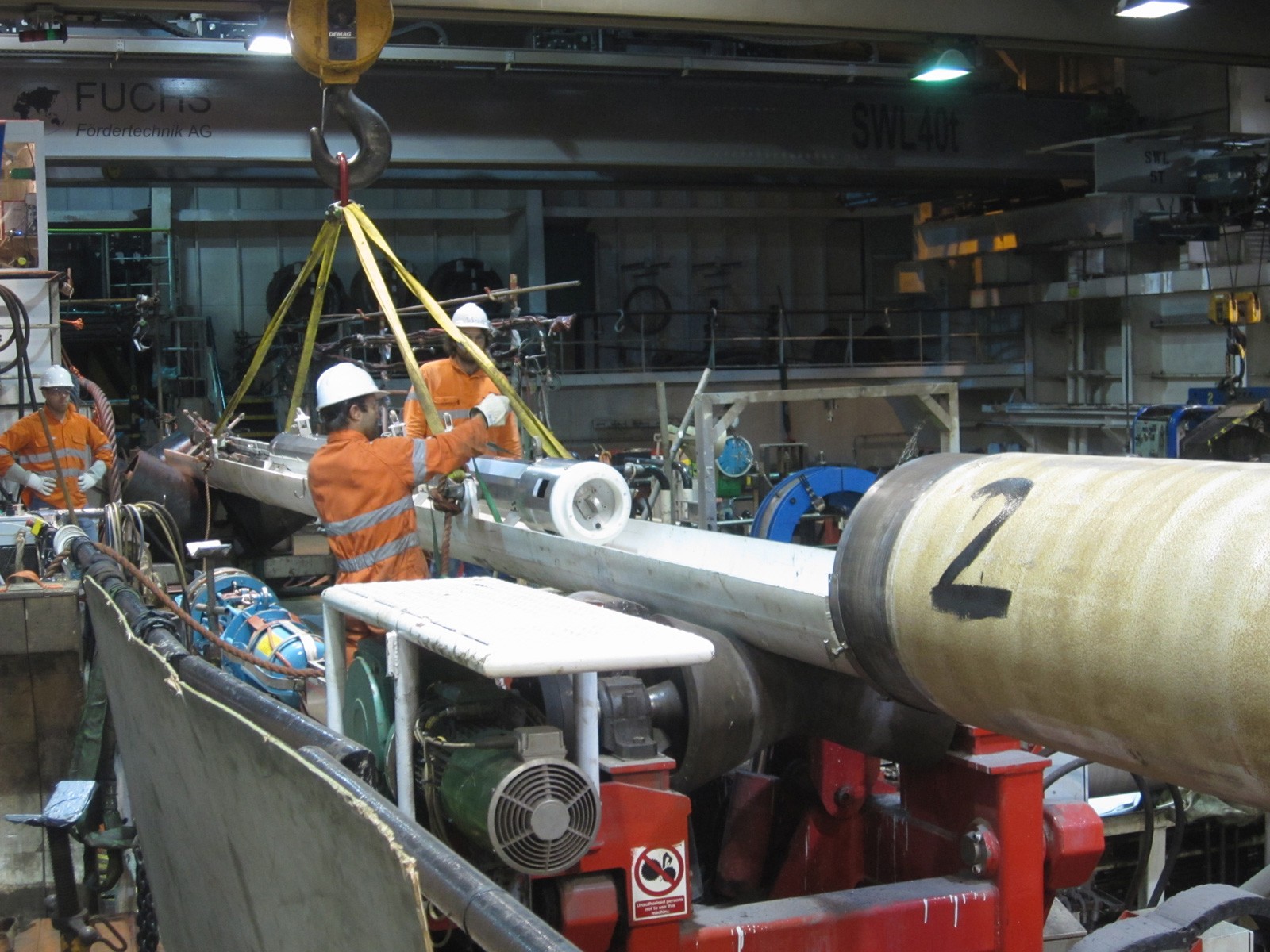Comprehensive Pipeline Welding Inspection: Protecting Facilities Stability
Comprehensive Overview to Pipe Welding Assessment: Ensuring Stability and Security in Pipe Building and Maintenance
The integrity and security of pipes are critical in today's framework landscape, emphasizing the essential function of welding examination in pipeline building and upkeep. A detailed overview on this subject not only highlights the requirement of evaluating weld top quality yet likewise attends to the numerous evaluation techniques readily available, such as ultrasonic and radiographic testing. By comprehending common defects and their effects, stakeholders can execute best practices that guarantee conformity and long life. Nevertheless, the complexities associated with welding inspection raising essential inquiries concerning sector standards and the evolving technologies that may redefine these techniques.

Value of Welding Examination
Welding evaluation plays an essential duty in guaranteeing the honesty and safety and security of pipeline systems. It works as a basic process that verifies the quality and dependability of bonded joints, which are typically the most weak spots in pipe building and construction. With systematic examination, inspectors can identify potential defects such as fractures, porosity, and incomplete blend, which may jeopardize the structural stability of the pipeline.
The importance of welding examination expands beyond plain compliance with sector criteria; it additionally safeguards public wellness and the environment. Detailed assessments can improve the longevity of pipeline systems, reducing the demand for costly fixings and downtime.
In addition to ensuring safety and compliance, welding assessment cultivates a society of quality control within companies. By focusing on inspection throughout the welding procedure, business can develop a reputation for reliability and quality, inevitably causing boosted client self-confidence and service possibilities (Pipeline Welding Inspection). Therefore, the value of welding evaluation can not be overemphasized in the context of pipeline building and construction and maintenance
Secret Welding Processes
Different welding processes are used in pipeline construction, each with its very own advantages and applications. Amongst the most widely made use of techniques are Shielded Metal Arc Welding (SMAW), Gas Tungsten Arc Welding (GTAW), and Gas Metal Arc Welding (GMAW) SMAW is favored for its convenience and capacity to execute well in various ecological conditions, making it ideal for area applications.
GTAW, usually described as Tungsten Inert Gas (TIG) welding, is identified for its capacity to produce top quality welds with excellent control over heat input, making it optimal for thin-walled pipelines and stainless steel materials. GMAW, or Metal Inert Gas (MIG) welding, provides high deposition prices and is effective for large-scale tasks, often used in the fabrication of pipelines in regulated atmospheres.
In Addition, Submerged Arc Welding (SAW) is utilized for its deep infiltration and high productivity, particularly in the construction of large-diameter pipelines. Each of these procedures contributes to the general honesty and safety of pipeline buildings, enabling welders to choose one of the most ideal technique based on material type, project needs, and environmental problems. Understanding these crucial welding procedures is vital for effective pipe welding assessment.
Typical Problems and Their Influence

Porosity, defined by small gas pockets trapped within the weld, weakens the material and can result in leaks. Splits, which may take place due to thermal stresses or inappropriate air conditioning, can result and propagate in structural failing under pressure. Undercutting, where the base steel is eroded along the weld grain, decreases the reliable cross-section of the visit this site pipe, increasing the danger of crack.
Insufficient blend occurs when the weld metal does not effectively bond with the base metal, leading to weak areas that may fail under anxiety. Slag addition, the entrapment of non-metallic material within the weld, can additionally weaken the joint's honesty. Determining and resolving these problems early in the building procedure is critical to making certain the long-term dependability and security of pipeline systems, therefore guarding both the framework and the environment.
Examination Tools and techniques

Visual inspection is the very first line of protection, permitting examiners to determine surface area abnormalities, imbalance, or various other noticeable problems. Ultrasonic screening uses high-frequency acoustic waves to detect internal flaws, supplying accurate deepness measurements and identifying flaws without harming the weld. Radiographic testing uses X-rays or gamma rays to create photos of the weld, making it possible for the recognition of internal voids, fractures, or additions.
Magnetic bit screening is specifically effective for spotting surface and near-surface interruptions in ferromagnetic materials. This method includes using an electromagnetic field and fine iron fragments to the weld, disclosing flaws with the accumulation of bits at defect sites.
Along with these techniques, specialized tools such as automated ultrasonic screening devices and electronic radiography systems improve examination accuracy and efficiency, making certain a detailed analysis of pipeline welds during building and maintenance.
Best Practices for Conformity
Abiding by finest techniques for conformity in pipeline welding inspection is crucial for making certain the honesty and safety and security of the framework. Organizations must establish an extensive high quality monitoring system that straightens with industry requirements such as ASME, API, and AWS. This consists of establishing in-depth welding procedures that define the products, techniques, and certifications required for welders.
Regular training and accreditation of inspection employees are important to preserve high expertise degrees. Inspectors need to be acquainted with various non-destructive testing (NDT) approaches, consisting of ultrasonic testing, radiographic testing, and visual examination, to efficiently recognize prospective defects.
Documents plays a vital role in compliance; keeping precise records of inspections, weld procedures, and personnel credentials aids to guarantee traceability and accountability. Set up audits and reviews of welding methods Get the facts must be conducted to recognize locations for improvement and ensure adherence to established methods.

Final Thought
To conclude, the execution of extensive welding evaluation protocols is extremely important for making certain the integrity and safety of pipeline building and construction and maintenance. By determining defects and utilizing innovative examination methods, organizations can significantly enhance the high quality of welded joints. Abiding by ideal techniques cultivates conformity with sector criteria, inevitably safeguarding public health and protecting against environmental dangers. Constant enhancement in evaluation processes will add to the durability and dependability of pipe systems, emphasizing the important role of welding evaluation in the market.
The stability and safety and security of pipelines are paramount in today's facilities landscape, underscoring the essential duty of welding examination in pipeline building and construction and upkeep. Comprehending these crucial welding processes is necessary for efficient pipe welding examination.
Sticking to finest methods for conformity in pipeline welding assessment is vital for ensuring the honesty and security of the facilities.In conclusion, the implementation of extensive welding assessment procedures is paramount for guaranteeing the honesty and safety and security of pipe construction and maintenance. Constant improvement in evaluation procedures will certainly contribute to the durability and integrity Get More Info of pipeline systems, underscoring the crucial duty of welding inspection in the industry.